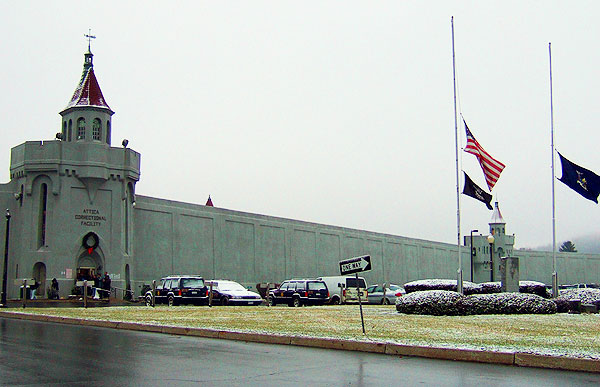
Photo by: bronayur, courtesy of Flickr
Attica Correctional Facility, in Attica, New York, was found to have one of the highest rates staff-inmate sexual misconduct in the nation.
A new report by the Bureau of Justice Statistics at the United States Department of Justice (DOJ) estimates that approximately 88,500 prison and jail inmates in the United States were victims of sexual misconduct between 2008 and 2009. About 2.1 percent of prison inmates and about 1.5 percent of jail inmates reported sexual victimization by another inmate. About 2.8 percent of prison inmates and about 2.0 percent of jail inmates reported sexual victimization by a staff member.
The report is the second Bureau of Justice Statistics study disclosing patterns of sexual violence in prisons and jails. It shows that the number of incidents of sexual violence has remained relatively constant since the first study was conducted in 2007.
Of the eleven prisons and jails found in a sample to have the highest rates of staff sexual misconduct, four are in New York State. About 8 percent of inmates in Attica Correctional Facility, 7.7 percent of inmates in Elmira Correctional Facility, 11.5 percent of inmates in the all-female Bayview Correctional Facility, and 5.6 percent of inmates in Orleans County Jail reported that they had experienced sexual misconduct by a staff member between 2008 and 2009.
The New York State Department of Correctional Services (DOCS) issued a statement saying that it has taken a “zero tolerance” stance toward sexual abuse in the state’s prisons and jails, providing written materials and an orientation on avoiding assault, as well as the encouragement and information necessary to report any. The statement says the agency has been pushing for the state legislature to apply to all DOCS employees the 1996 law criminalizing sexual behavior between most DOC employees and inmates. The statement says that some New York prisons might top the DOJ’s list because inmates here might be reporting it more often than inmates elsewhere because of New York’s vigilant anti-sexual assault policies.
The statement also says: “Because safety and security remain a top priority, we conduct frequent pat frisks of inmates to help keep potentially dangerous contraband out of prison. These frisks can lead to allegations of inappropriate touching or abuse. We will work with the Department of Justice to see, based on the anonymous self-reporting data presented, if there are in fact identifiable patterns of abuse and to determine how much of the issue may be a question of interpretation and perception.”
The report on prison and jail sexual abuse was released as a requirement of the Prison Rape Elimination Act of 2003. Advocacy groups such as the American Civil Liberties Union that pushed for the report have also been pressuring U.S. Attorney General Eric Holder for about a year to adopt a set of standards aimed at curtailing sexual assault in the nation’s prisons and jails, but he has yet to sign off on them.








